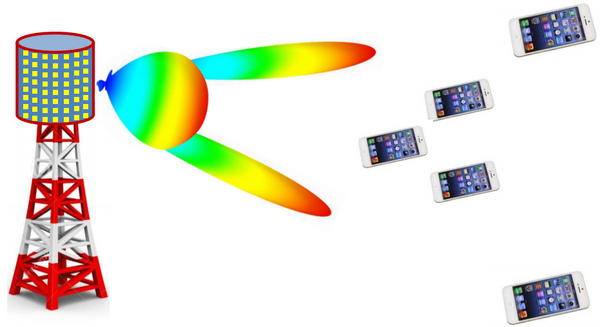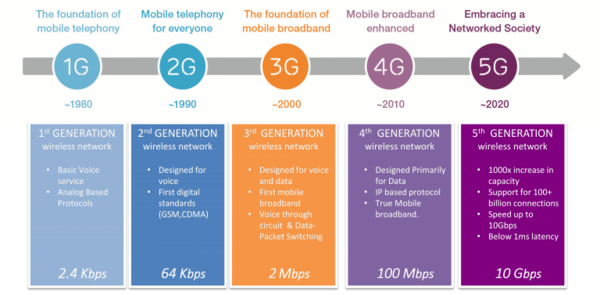Silicon-based Ka-band massive MIMO antenna systems for new telecommunication services SPS
This project aims to explore and optimize signal-processing techniques for coordinated transmission from a massive MIMO transmit antenna array to separate receive terminals.
External webpage: www.sps.tue.nl/ictlab/project/SILIKA/
Duration
September 2016 - August 2020Project Manager
SILIKA is a European funded Marie Curie project that started September 1, 2016, with partners from Sweden, Belgium and the Netherlands. Its main purpose is to train 12 young researchers (PhD students) to become experts in key technologies for future mobile telecommunication systems. Throughout the training program, the Ph.D. students will work on an individual research topic that is of high relevance for the successful development of the next-generation mobile telecommunication system (5G). Each student will spend at least 18 months at an industrial partner. In this way, the outcome of the research will directly benefit the European industry while the young researchers gain experience in an industrial work environment. The contributions from each research topic will be combined in a 5G base-station demonstrator, which will be assembled and tested by the end of the project.
Participants
Project Related Publications
-
Dimitrios Konstantinou,Thomas A. H. Bressner,S. Rommel,U. Johannsen,A. Bart Smolders,I. Tafur Monroy
High capacity real-time hybrid optical-wireless 5G fronthaul with dynamic beam steering
(2021) -
Amirashkan Farsaei,Alex Alvarado,Frans Willems,Ulf Gustavsson
An improved dropping algorithm for line-of-sight massive MIMO with max-min power control
IEEE Communications Letters (2019) -
Ulf Johannsen,Simon Rommel,Ali Al-Rawi,Dimitrios Konstantinou,Thomas Bressner,Idelfonso Tafur Monroy,Bart Smolders
ARoF-Fed antenna architectures for 5G networks
(2019) -
Idelfonso Tafur Monroy,Thiago R. Raddo,Simon Rommel,Chigo Okonkwo,Nicola Calabretta,Ulf Johannsen,Gijs Dubbelman,Jesse Scholtes,Ben Rutten
Testing facilities for end-to-end test of vertical applications enabled by 5G networks
(2018) -
Amirashkan Farsaei,Frans Willems,Alex Alvarado,Ulf Gustavsson
A reduced-complexity linear precoding strategy for massive MIMO base stations
(2018)
SILIKA is a European funded Marie Curie project that started September 1, 2016, with partners from Sweden, Belgium and the Netherlands. Its main purpose is to train 12 young researchers (PhD students) to become experts in key technologies for future mobile telecommunication systems. Throughout the training program, the Ph.D. students will work on an individual research topic that is of high relevance for the successful development of the next-generation mobile telecommunication system (5G). Each student will spend at least 18 months at an industrial partner. In this way, the outcome of the research will directly benefit the European industry while the young researchers gain experience in an industrial work environment. The contributions from each research topic will be combined in a 5G base-station demonstrator, which will be assembled and tested by the end of the project.
Our Partners
Researchers involved in this project

The continuously growing need for higher data-rates and, therefore, more signal bandwidth in wireless communications, requires the use of multi-antenna base stations employing the recently introduced massive Multiple-Input-Multiple-Output (MIMO) concept and operating at millimeter-wave frequencies, e.g. 30 GHz. However, the implementation of such complex antenna systems into highly-integrated, energy- and cost-effective solutions is very challenging. Therefore, we propose an innovative antenna system concept utilizing silicon semiconductor electronics that can generate or receive at millimeter-wave frequencies in order to truly expand wireless communications into the outer limits of radio technology.

The main research objectives of SILIKA is to develop innovative integrated antenna systems for future 5G base stations operating at millimeter wave (mm-wave) frequencies utilizing highly-integrated and cost-effective silicon (Bi-) CMOS technologies. These antenna systems will rely on the use of multi-antenna massive MIMO concepts in which the number of individual antenna elements in the base station is much larger than the number of users. In state-of-the-art phased arrays, only a limited number of identical antenna beams are used, usually operating in a single frequency band. Milti-antenna massive MIMO systems, however, can generate multiple beams, each with different shape operating at different frequencies, using polarization agility and adaptive waveforms.
Multi-element antenna systems are expected to increase the energy efficiency of future base stations, while achieving high data rates with indoors and out-door coverage both for line-of-sight and non-line-of-sight propagation conditions, by sending out many independent data streams to simultaneously serve many users. The proposed design methods in SILIKA aim at synthesizing energy-efficient multi-beam array antennas, while minimizing the effects of electromagnetic mutual coupling between the array antenna elements, i.e., de-correlating them.
Research Output
If you are interested in learning more about this project, an overview of publications can be found here







